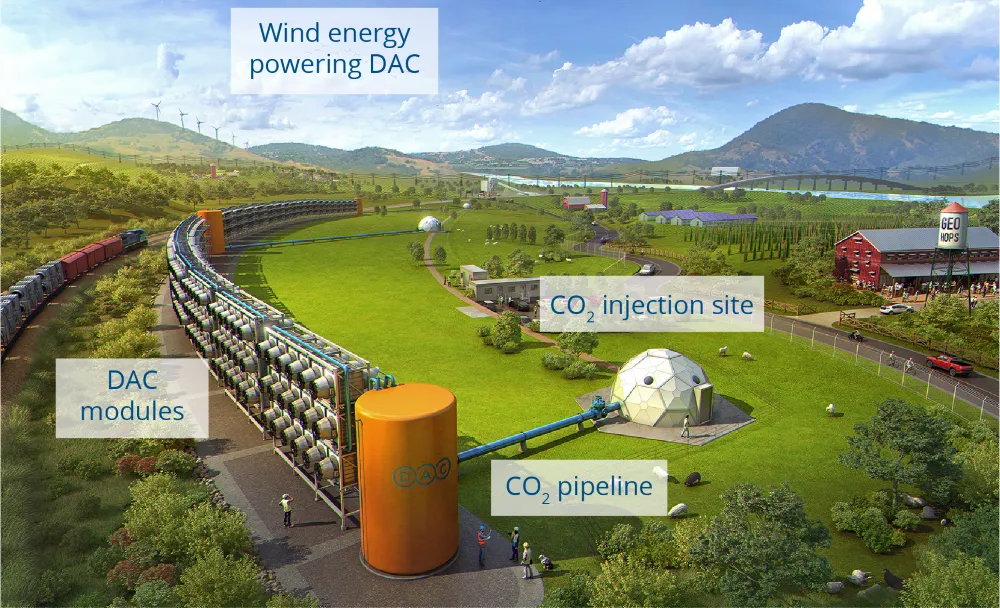EDMONTON, AB — Although Canada can achieve its 2030 emissions target through conventional direct emissions reduction strategies, some forms of engineered carbon dioxide removal (CDR) will be needed to reach the country’s net-zero emissions target by 2050, according to a new report by the Pembina Institute entitled Engineered Carbon Dioxide Removal in a Net-Zero Canada.
Net-zero means the amount of greenhouse gases we put into the atmosphere equals the amount we take out. It is critical we do all we can to make early, deep and sustained emissions reductions in industry, transportation, agriculture and other sectors.
But some emissions will be much harder than others to reduce to zero. About 10 to 15 per cent of today’s emissions fall under this difficult-to-decarbonize category. Carbon dioxide removal can address these leftover, difficult-to-avoid emissions indirectly, by removing an equal amount of carbon dioxide from the atmosphere. It can also help us extract some of the legacy carbon that humanity released into the atmosphere in the past.
The potential of CDR cannot be a reason to slow down emissions reduction efforts. This would not only damage efforts to reduce climate change impacts, but would also likely negatively impact public perception towards CDR. However, investing in development and testing now is important to ensure readiness for widespread use near the mid-century, when cheaper emission reduction opportunities have been fully implemented.
Several forms of engineered CDR are considered in this report. These technologies and techniques are at different stages of readiness.
Governments and policy makers should get involved to ensure the technologies are developed and used in a timely, responsible manner. They need to:
- Support research and development that addresses risks, uncertainties and high costs of CDR.
- Ensure we can credibly measure and verify CDR capture and storage.
- Generally, engage and educate communities that might be impacted by CDR development and, in particular, involve Indigenous communities to ensure their rights and interests are protected and their consent is obtained.
- Create clear regulations to reduce investment uncertainty around CDR development.
- Support a business case for CDR, likely by recognizing CDR in the federal and provincial carbon offset systems, to give projects access to reliable revenue to justify investment.
The Pembina Institute’s analyst and one of the authors of the report, Carson Fong, is available for interviews on the importance of carbon dioxide removal.
Quotes
Carson Fong, analyst with the Pembina Institute, said:
“We need to consider carbon dioxide removal as a tool to prevent catastrophic climate change, but it’s potential cannot be a reason to slow down emissions reduction efforts. This would not only limit our efforts to reduce climate change impacts, but would also likely turn public perception against carbon dioxide removal.”
John Van Ham, senior director of Industrial Decarbonization with the Pembina Institute, said:
“Carbon dioxide removal could play a huge part in getting Canada to net-zero, but it needs to be implemented with careful and clearheaded oversight. This report provides policy-makers with a thorough grounding in the issues around this technology.”
Na'im Merchant, executive director of Carbon Removal Canada, said:
"This report serves as a much-needed primer to start a national conversation on the vast potential for carbon removal scale-up in Canada. This report will be an important first step in establishing Canada as a global leader in the rapid and responsible deployment of this critical suite of technologies that will have an important role to play in meeting our climate goals and driving inclusive and equitable economic development."
[30]
Contact
Hanneke Brooymans
Senior Communications Lead, Business Renewables Centre-Canada
587-336-4396
hannekeb@pembina.org
Graphics
Third Way partnered with Gensler, a world-renowned architecture and design firm, to develop visual renderings that showcase examples of direct air capture and other carbon management solutions, paired with clean energy technologies in various settings. As indicated to the Pembina Institute by Third Way, as long as credit to Third Way is given, news organizations are also welcome to use these renderings.
You can find more about this project here: https://www.thirdway.org/blog/picture-it-carbon-management-across-america
You can access the graphics here: https://www.flickr.com/photos/thirdwaythinktank/sets/72177720304068450/
Background
Report: Engineered Carbon Dioxide Removal in a Net-Zero Canada
Policy brief: Engineered Carbon Dioxide Removal in a Net-Zero Canada: Policy Brief
Fact sheet: Engineered Carbon Dioxide Removal in a Net-Zero Canada: Fact Sheet





